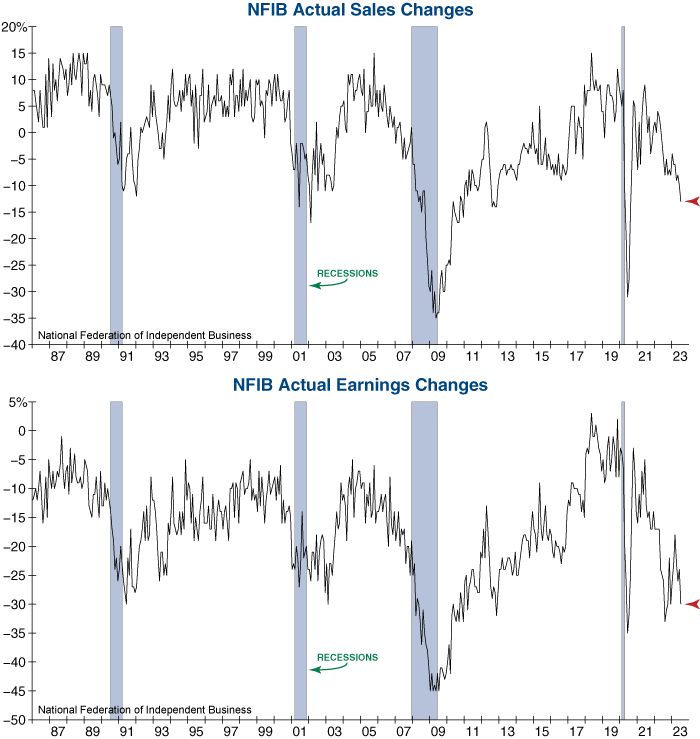The National Federation of Independent Business (NFIB) reported that their Small Business Optimism Index improved by 0.9 points in July, yet the Index remains at a historically depressed reading of 91.9. The most important problems cited by small businesses continue to be quality of labor (23% of small businesses) and inflation (21%), followed by taxes (16%), cost of labor (10%), and government regulations (10%). However, a new concern that is emerging is falling customer demand.
Last month, a net negative 13% of small business owners reported that sales improved over the past three months, while a net negative 30% reported that earnings improved over the same period (graphs below). When these survey components have previously indicated such dire deterioration in small business sales and earnings contraction, the U.S. economy has typically been in recession. Small business owners clearly remain pessimistic about their future prospects, and the NFIB has a similarly grim outlook as they stated: “Small businesses, especially new ones, face an exceptionally challenging environment over the next two years.”
Given that small businesses account for nearly two-thirds of new jobs and over 40% of U.S. GDP, it will be difficult for the Federal Reserve to pull off a soft landing as long as this critical segment of the economy continues to struggle…

